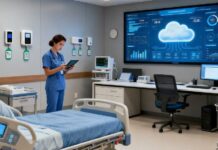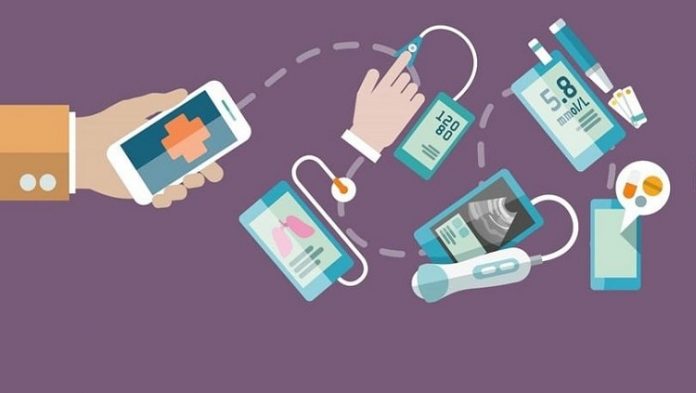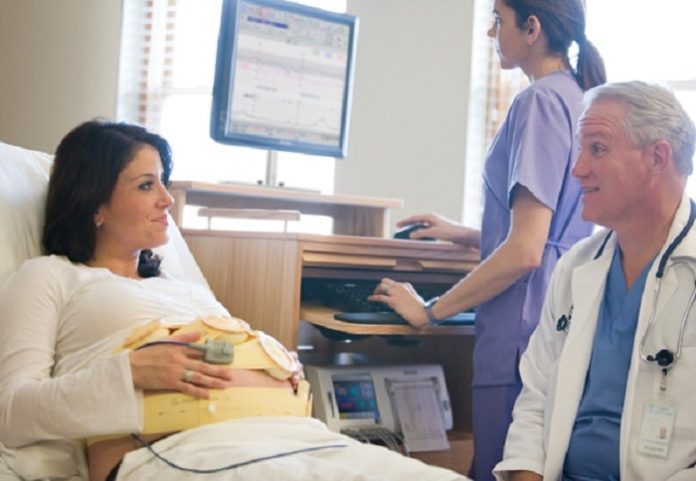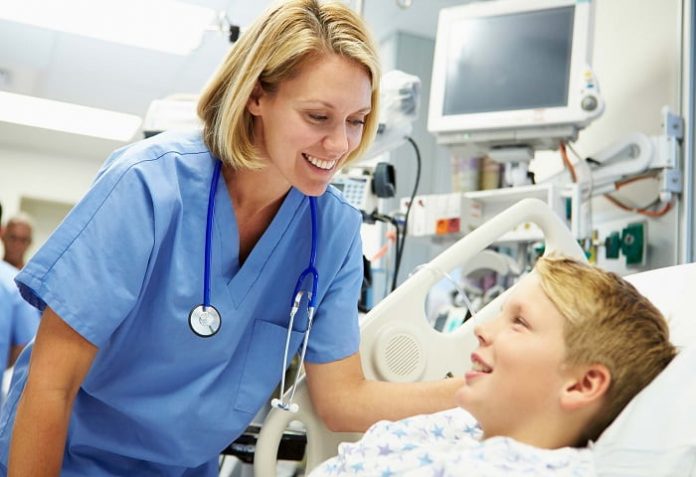Virginia Hospital Center patnered with Siemens to improve patient safety
International Trends and Evolving Dimensions in Remote Healthcare
In this rapidly changing world, information communication is essential. Accessibility of information has always been challenging and it becomes much more complex when it comes to health information. We live in an era of electronic communication that makes tasks easier for most of us day by day.
“In a time of drastic change, it is the learners who inherit the future.
The learned find themselves equipped to live in a world which no longer exists.”
Eric Hoffer (1902-1983)
In this rapidly changing world, information communication is essential. Accessibility of information has always been challenging and it becomes much more complex when it comes to health information. We live in an era of electronic communication that makes tasks easier for most of us day by day. For example, how many times in a year do we visit our physical bank branch for transactions anymore? Information Communication technology has changed the modus operandi forever and believe me it will not remain the same.
The world of innovation despite challenges will ensure that change is the only constant.Ironically, when it comes to healthcare, we are forced to go to hospitals for traditional face to-face consultation and follow on care. Such visits to the hospitals, especially follow-ups for prescription refills, leads to increased cost of care and brings down the optimum utilization of healthcare resources.
The healthcare community is looking for a change that can transform the delivery of healthcare and bring more qualitative healthcare within affordable, sustainable and accountable dimensions.While eHealth is the use of information and communication technology for health at the local site and at a distance (WHO 2004a), Telemedicine or Telehealth (terms which are used interchangeably) is the use of information communication technology for diagnosis or treatment at a remote site.Telehealth is the remote delivery of health-related services and information via telecommunications technologies.
Telehealth can happen between a patient and a clinician or between two clinicians, the latter being normally described as telemedicine. It includes an infinite variety of technologies, ranging from patient home monitoring systems to medicine dispensing machines.[1]
A decade ago, healthcare stakeholders were quick to sense the importance of the subject but were slow in adoption. Many slow but steady initiatives at the global level are increasing the adoption of Telehealth/Telemedicine. On the one end, there are developed countries that have much refined and mature techniques in healthcare practices with thoughtful well-defined processes at work while on the other, there are developing or underdeveloped countries where healthcare is nonexistent in sections of society. Surprisingly, most countries are now adopting telemedicine application and techniques in healthcare for their own reasons. To adopt telemedicine, information communication infrastructure is essential. Network systems are vital for upcoming international coordination, cooperation and collaboration in areas of global healthcare.
International Initiatives
Despite many challenges in adoption of telemedicine at various levels, a significant development can be seen worldwide towards adopting telemedicine applications, tools and techniques. Telemedicine has become a powerful medium and has added new dimensions to healthcare, not only to render therapeutive healthcare but also educational, supportive and preventive care. Telemedicine initiatives can be witnessed across the world in various forms and dimensions. It has its reach in countries like India, Nepal, Pakistan, Korea, Australia in Asia, countries in Africa and varying presence in developed countries like the United States, Canada and the United Kingdom at the same time.
The increased focus in adoption of Telehealth applications across the globe is expecting a growth of nearly 10 percent CAGR in clinical applications while its market is predicted to touch US$703 million and a mind boggling US$ 3987 million in homecare applications by 2010[2] with a CAGR of 56 percent.
eHealth is becoming the third pillar of European healthcare (€11 bn in 2004, estimated to be around €50 bn in 2010) and expected to touch a whopping five percent of total health budget by 2010. For example, in the latest development in NPfIT, regions of Kent, Newham and Cornwall are running telemedicine pilots for over 3,000 patients, and are currently funded by the Department of Trade and Industry and Communities and Local Government. According to the Improving Chronic Disease Management report by the DoH, more than 15 million adults in the UK live with a chronic disease[3]. The DoH has launched a new telehealth initiative in 2008 called Whole System Long Term Conditions Demonstrator Programme, which will install more than 7,000 devices in the three selected areas (Kent, Newham and Cornwall). These devices will be able to measure blood pressure, pulse and blood glucose levels, as well as deliver medication reminders and monitor bed occupancy.
Satellite-based telehealth solutions are also underway. Private companies are collaborating in new ventures and running projects, which aim to connect telehealth user communities across Europe including Cyprus, France, Poland and the UK, as partners.
Scotland is ahead in terms of telehealth, and this is largely due to the country’s geography, with numerous remote locations which can benefit from distant care. The government set up the Scottish Telemedicine Action Forum as early as 1999 and in 2006 the Scottish Centre for Telehealth (SCT) was created, which is running a vast array of projects.
There are numerous initiatives in US too where Telemedicine is increasingly used to address different challenges. One such is Tele-psychiatry in rural regions where specialists are in short supply. Telemedicine is spreading its wings in almost all the specialties with versatile modes of delivery using satellite, videoconferencing, telephone and even telehealth robots. The U.S. Army Telemedicine and Advanced Technology Research Center (TATRC) manages more than 200 research projects in advanced medical technologies, with concentration in disciplines such as simulation, distance learning, information and communications, or robotics to name a few. In recent years, TATRC has progressively increased its international portfolio and is now overseeing several programs in cooperation with foreign countries.
There is a wonderful example of the use of telemedicine during the 2005 earthquake disaster in Pakistan, where an estimated population of 150,000 required treatment for severe post quake mental disorders. A recommendation was made to use e-psychiatry technology, as there were few qualified resources to help widely affected remote areas. The Institute of Psychiatry in Rawalpindi was utilized as the main hub for connecting remote centers. With limited mental health resources and almost non-existent mental healthcare in the primary care setup, e-psychiatry filled the gap to a large extent.
There is another example in India where a nonprofit organization, Byrraju Foundation created a remarkable milestone by connecting over a million people in 185 villages in Andhra Pradesh, India. The objective was to make the rural population self-reliant providing services in the area of healthcare and education. This on-going initiative has helped save many lives by facilitating second opinions and creating healthcare awareness.
Challenges and Benefits
The way forward is challenging for all stakeholders. Some of the challenges are:
• Cost of implementation, maintenance and sustainability
• Availability of high speed telecommunications lines
• Low healthcare organizational readiness
• No uniform healthcare standards
• Deployable Solutions suitable for different markets
The benefits of the strategic use of remote healthcare solutions are enormous if implemented with focused objectives of the need of in each geographical region. It can:
• Improve access to healthcare services in rural and underserved areas with teleconsultation and using tele-ECG and TelePACS programs.
• Reduce travel time and lower costs for patients who just need a prescription refill.
• Improve quality of healthcare through timely diagnosis and treatment. For example, if ECG data is sent at the preliminary stage of angina, then an appropriate action can be taken to control further damage within the golden hour.
• Reduce isolation of rural practitioners. Second opinion helps the rural practitioners to stay in touch with specialists and also sharpen their skills at the same time.
• Expand educational offerings highlighting that prevention is better than cure. Telemedicine can help create awareness about various diseases and comes very handy at the time of epidemic and natural calamities.
• Improve quality of care for people with chronic or lifestyle diseases, like diabetes.
Bottom Line
Telemedicine has tremendous potential to change the dynamics of healthcare but its optimum utilization is yet to be harnessed. It warrants collaboration from all segments of the healthcare community to define and apply uniform standards, cost-effective deployable solutions and a mindset to change healthcare delivery. While public or government authorities can mandate development of solutions based on future needs, the private players can support by bringing deployable capability and maturity into the system. This can be done by creating innovative healthcare solutions that enable current systems to connect to telemedicine for transforming healthcare delivery to the desired level where it becomes more accessible, affordable, qualitative and sustainable and ultimately helps the community as a whole.
References:
http://pacificfamilyhealth.wordpress.com/2007/03/21/challenges-of-telemedicine-in-developing-countries/ (Challenges Of Telemedicine In Developing Countries, March 21, 2007 by rodney itaki)
eHEALTH: INTERNATIONAL INITIATIVES, STRUCTURES AND TRENDS by F. Lievens, M. Jordanova
[1] Update of the UK public health market profile by Kabledirect.com
[2] Source Data Monitor – Telehealth Spending Through 2012 North America and Europe
[3] Update of the UK public health market profile by Kabledirect.com
Skagit Valley Hospital Regional Cancer Care center enhances patient care with Elekta Axesse
New Treatment Option for Patients with Tumors of the Brain, Spine and Body.
Siemens Healthcare Dianostics honoured among the 15 winners chosen for the Pinnacle Award
GE Healthcare recognizes first magnetic resonance imaging system to receive exomagination certificat
Today’s Fetal Monitoring: Responding to “Multiple” Needs
The increasing number of high-risk pregnancies is placing greater demands on hospitals and obstetrical clinicians worldwide – and is resulting in a need for a higher level of fetal – maternal monitoring during both the antepartum and intrapartum delivery of care during pregnancy.
The increasing number of high-risk pregnancies is placing greater demands on hospitals and obstetrical clinicians worldwide – and is resulting in a need for a higher level of fetal – maternal monitoring during both the antepartum and intrapartum delivery of care during pregnancy. So it is of interest and importance to those who deliver obstetrical care to know how the latest technologies are helping to address these new challenges and demands.
Pregnancies with multiples comprise 2% – 4% of all live births in the United States an most developed countries, with the current frequency of high-order multiple births at 400-800% over the spontaneous rates observed in the late 1970s. [1]. In the United States alone, the rate of twin births has increased by 70% since 1980 and the rate of triplets has increased more than 400% over the same time period. Although right now those numbers are stabilizing or slightly declining with the current rate of triplets is at 162 per 100,000 live births in the United States. [5]
The worldwide surge in multiple births is largely due to the improving results of assisted reproductive technology (ART) and the introduction of these techniques in more countries. [2] As more cradles are filled, however, this multiple-birth trend has lead to a substantial increase in high-risk pregnancies. [1] Compared with 25% of singleton gestations, over 80% of multiple pregnancies develop complications antenatally. [5]
Fetal monitoring is the standard of care in most modern labor and delivery care settings, but with increasing multiple births, monitoring of twins and triplets is now a required functionality. Even the smallest community hospital today can expect to see its fair share of multiple births. Today’s new generation of fetal monitors can provide non-invasive triplet monitoring in one device and offer solutions for patients’ desire for ambulation as well as caregivers’ needs to be away from the bedside during labor.
Various societal factors have impacted pregnancy risk factors. Due to major changes in the lifestyle of women during the second half of the 20th century, the age at which childbirth is desired has advanced in most developed countries. [1] In addition, increased risk during pregnancy is attributed to younger age as well as advanced age, [3] and according to a December 2007 report from the Centers for Disease Control and Prevention, the birth rate among teenagers 15 to 19 in the United States rose 3 percent in 2006. [4] Add to this the fact that health concerns such as diabetes and obesity are on the rise in women of child-bearing age, which can jeopardize a pregnancy, and the fact that more women are conceiving with in-vitro fertilization (IVF), which can result in multiple births. [1] Together these factors contribute to a growing frequency of high-risk pregnancies and deliveries with potential adverse complications that include preeclampsia, gestational hypertension, and placental abruption. [5]
Lawrence Devoe, M.D., professor and former chair of the Department of Obstetrics and Gynecology with the Medical College of Georgia, explains the greater demands created by ART. “IVF is providing a child to families whose inability to conceive naturally would otherwise leave them childless. But the flip side of that is an increased rate of multi-fetal gestation, which in turn creates a situation of elevated risk not found in a single pregnancy. And even with a single pregnancy, with IVF we are often dealing with a population that can be of an older age and with an elevated risk of medical problems such as hypertension and diabetes.”
Minimizing risk is of paramount importance with the IVF population, Dr. Devoe points out. “You can’t predict the future but you can maintain an appropriate level of vigilance. The argument for the widespread use of fetal monitors is that without them, the unpredictability of labor can lead to unnecessary jeopardy for the mother and baby. Two common complications of labor are placental failure and placental dysfunction, which are not always possible to predict. The family that has undergone IVF has made a huge investment of time, energy, emotion and capital in having a child. You want to stay as far away from trouble as possible. They are perhaps the most risk-averse population one could find.”
The changes in obstetrical care and obstetrical patients as outlined above has resulted in a whole new set of requirements to address these previously unmet needs needing to be addressed in state of the art fetal maternal monitoring solutions.
This is why high-level fetal – maternal monitoring solutions make a difference. When considering an investment in fetal- maternal monitoring technology for multiple births and other high-risk situations, it is prudent to consider certain features that are available on the market today:
- A larger external display that can be mounted across the room to allow clinicians to interact with the fetal-maternal monitor even when they are not at the patient’s bedside.
- Electronic units linked to an obstetrical information management system give staff the ability to see the entire landscape of laboring patients, including the fetal maternal monitoring information, obstetrical record, progress of labor, at a central nursing station, in another patient’s room, in the obstetrician’s office or even at their home via a secure internet access.
- Long-term data storage of fetal heart rate traces and obstetrical records and backups, is an important legal consideration so that data from the delivery can be generated even decades later if necessary.
- Non-invasive twins or triplets monitoring in one device, with continuous comparison of maternal heart rate with the fetal heart rate(s) ensures each heart rate is being monitored separately and distinctly.
- Monitoring of non invasive maternal blood pressure, maternal Sp02, and maternal ECG / maternal heart rate.
- Cordless transducers that allow the mother to be mobile while she and the fetus or fetuses are being continuously monitored.
- Waterproof cordless transducers that allow the use of a Jacuzzi or bathtub or shower for relaxation and also pain relief during labor or for the option of a water birth.
Because women generally make the majority of a family’s healthcare decisions, an obstetrics department can be considered an important marketing arm of a hospital. A reassuring and satisfying birth experience can leave a significant impression and can result in the utilization of subsequent services and referrals to others. Another consideration is that today’s patients are educated and savvy. The availability of health information on the Internet and via print publications has resulted in patients who are aware of their options and who are requesting the highest level of clinical care and technology that is available.
It is the responsibility of companies developing fetal-maternal monitoring solutions to work toward continuous innovation of technology to help the clinicians deliver better care and help improve outcomes. This must be balanced with providing the best returns on investment for each tight healthcare dollar and meeting diverse worldwide needs with affordable products that provide attractive long term cost of ownership.
Dr. Devoe has attended over 10,000 deliveries in his 39 years of practice and published one of the earliest studies involving the monitoring of multiples in the 1980s. “Fetal monitors are the first line of defense, especially when a nurse or physician can’t be at a bedside all the time,” he concludes. “I can’t even begin to tell you have many babies I’ve personally intervened with whose outcome would have been a great deal different if not for fetal monitoring.”
References
[1] Blickstein I, The worldwide impact of iatrogenic pregnancy. Int J Gynaecol Obstet. 2003;82:307-17.
[2] Burry K. Reproductive medicine: where we have been, where we are, where are we going? An ethical perspective. Am J
Obstet Gynecol. 2007;196(6):578-80.
[3] Centers for Disease Control and Prevention. Births: Final Data for 2005. Atlanta, Ga: National Vital Statistics Report; December 5, 2007. Volume 56, Number 6.
[4] Centers for Disease Control and Prevention. Teen Birth Rate Rises for First Time in 15 Years. Atlanta, Ga: National Center for Health Statistics; December 5, 2007. Available at: http://www.cdc.gov/nchs/pressroom/07newsreleases/teenbirth.htm. Accessed March 3, 2008.
(5) Centers for Disease Control and Prevention. http://www.cdc.gov/nchs/data/nvsr/nvsr56/nvsr56_06.pdf Births Final Data 2005
Interactive communication in healthcare environments-Achieving Excellence
Delivery of quality healthcare is becoming more complex. Demands for efficiency, maintaining costs, and continuously improving patient care remain an ongoing challenge.



















